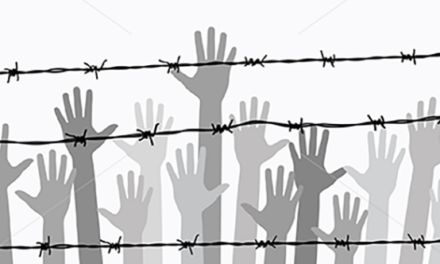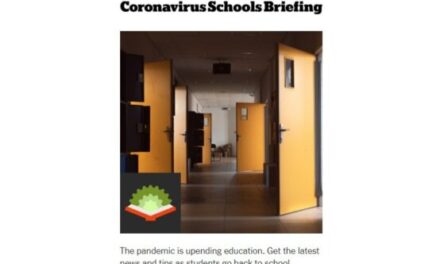What students and teachers are experiencing during COVID-19 isn’t typical online instruction. It’s emergency remote teaching and learning.
In just a few short weeks, the COVID-19 pandemic has transformed the nation’s schools and universities from brick-and-mortar centers of students’ lives to ghost towns with access limited only to essential employees. But while we’ve only just made this dramatic pivot to online learning, it’s already clear that it will exacerbate problems of educational access, equity, and accessibility.
It hasn’t taken long for myriad students, teachers, and professors alike to start posting comments about how much they hate online learning. I can’t blame them! While most schools and universities have long had some virtual education supports in place, the current situation is unprecedented, and few institutions are truly prepared for it. To the extent that they had plans for remote instruction in place at all, most schools anticipated only providing online instruction for a limited number of students or during short-term school closures. Most have not prepared for weeks or months of disruption for the entire community.
As an online professor since 2001, I know that what most students, faculty, and staff are experiencing so far is not online education as it should be. Over the years, I have spent countless hours revising and updating content to fit this medium. I can’t imagine having to flip the switch to remote instruction so suddenly, perhaps with only 48 hours’ notice. We have to understand that what educators have been asked to do is extremely challenging in the best of circumstances. There will be technical problems and access issues. Students will be left on the wrong side of the digital divide, and services will not be delivered equitably. Things will not go smoothly for everyone, and these will not seem like normal teaching and learning conditions — for anyone.
What is happening today can best be described not as online education but as emergency remote teaching and learning (ERTL) — or, as some have called it, pandemic pedagogy. We certainly can’t expect ERTL to be like face-to-face schooling, nor should we expect it to resemble the sort of well-planned and designed online education that many have spent years learning to provide. Even for my online graduate students — who chose to study through an online program, often while working full time and caring for children and families — the last few weeks have been extraordinarily stressful and hard to manage. Imagine how much more challenging it has been for those who are learning remotely for the first time.
For me, too, the sudden scrambling of our educational systems has been difficult, to say the least. But as an experienced, online educator, I do have some words of advice for parents of K-12 and university students:
- Give students some time to process all of this. So many plans have been thwarted: sports, study abroad, high school and university commencements. How many K-12 and college students want to learn online, at home, and isolated from their friends? They will need time to get used to this new reality, one that they didn’t choose for themselves.
- Develop family schedules. Small children will need guidance, but most children can draft their own schedules for doing their schoolwork. Of course, families will have to determine whether siblings should keep to the same hours, and if so, how to keep them out of each other’s hair.
- Create spaces that encourage learning. Students need to have somewhere quiet to do their work, whether it’s a shared space, their own room, the kitchen table, or another part of your home. I’ve heard that some families have already converted closets into study spaces.
- Encourage socialization — at a distance of course! We all need our friends and family. Help your children connect with them. I’ve seen folks having dance, movie watching, and other kinds of “virtual” parties or hangouts.
- Be flexible and understanding. Even after the initial adjustment period is over, we are all going to have tough days, and so will our children. We will need to be understanding when those days come and adjust our plans and schedules as needed.
- Reach out to professionals if needed. It is important to recognize that this will affect us all profoundly, and many will benefit from professional help.
- Build in together and away time. No matter how extroverted or how much we love our family members, we all need some time away from one another! Take time to process what’s happening as a family, but also give one another needed space alone.
- Finally, support and be patient with your children’s teachers. It is easy to criticize and judge, but keep in mind that most teachers have only just been thrown into online instruction for the first time, and they are having to learn this new way of working while coping with their own personal challenges and the needs of their own children and family members. Don’t be surprised if it takes a few weeks for them to figure out how to teach effectively in this new environment. We’re all in this together.
ABOUT THE AUTHOR

Natalie B. Milman
NATALIE B. MILMAN is a professor of educational technology, director of the Educational Technology Leadership Program, and a faculty member in the Human-Technology Collaboration PhD Program at The George Washington University, Graduate School of Education and Human Development, Washington, DC. She is the author of Teaching Models: Designing Instruction for 21st-Century Learners .










